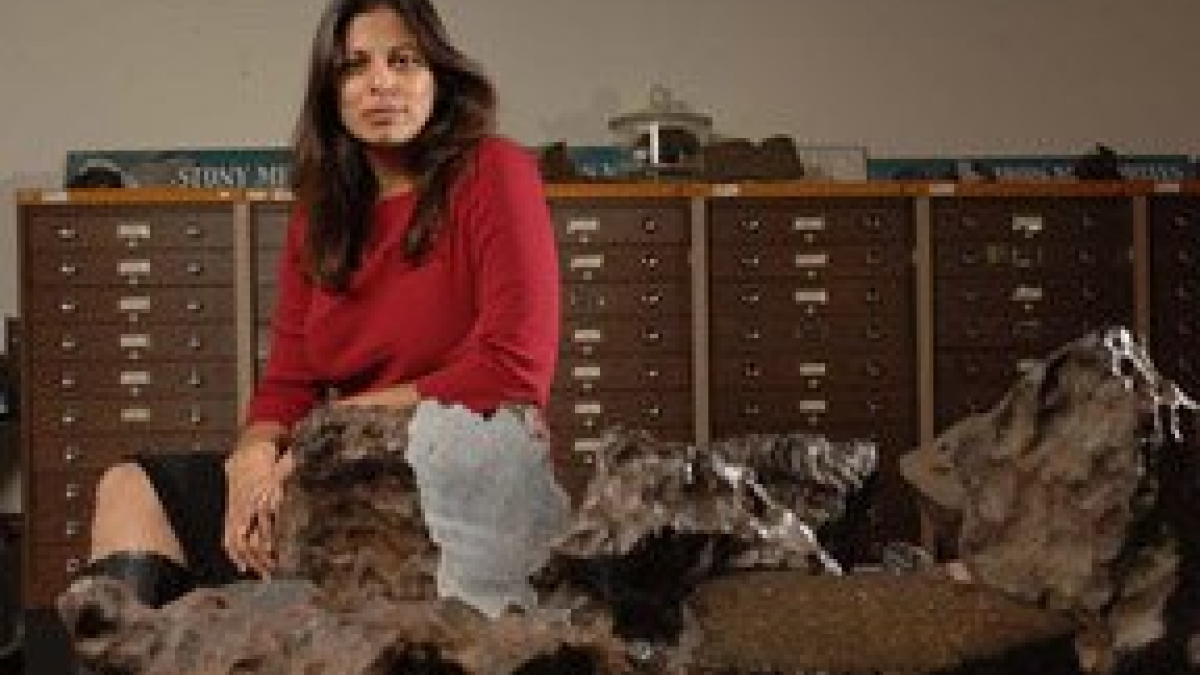ASU's Center for Meteorite Studies marks 50 years

For 50 years the Center for Meteorite Studies at Arizona State University has served as the intellectual hub for research on meteorites and other planetary materials. It is a place where scientists can conduct critical inquiries into the origin and evolution of the solar system and planets. Home to the world’s largest university-based meteorite collection, the center has educated generations of students, researchers, scholars and the public on meteorites. To commemorate the 50th anniversary, the center will hold a series of special events Oct. 21 on ASU’s Tempe campus.
“We are delighted for this opportunity to share the center’s accomplishments over the past 50 years and our vision for the next era of scholarship in meteorite studies. And we are honored that so many colleagues, friends and supporters of the center will be joining us for a celebration of the past, present and future of meteorite science,” says Meenakshi “Mini” Wadhwa, director of the Center for Meteorite Studies and a professor in the School of Earth and Space Exploration in ASU’s College of Liberal Arts and Sciences.
To celebrate this anniversary, the center will host a day-long symposium on “Meteoritics and Cosmochemistry: Past, Present and Future” on Oct. 21. This will feature talks by prominent researchers and scholars in the field. It will be followed by an evening lecture.
Timothy McCoy, curator-in-charge of the meteorite collection at the Smithsonian National Museum of Natural History and participating scientist on NASA’s Dawn mission, will speak on “Dawn: A Journey to the Birth of the Solar System,” in the Carson Ballroom at Old Main at 7 p.m. This is a free event, open to the public; however, a ticket will be required for entry to the lecture. Free tickets are available at http://cmsanniversary.eventbrite.com.
After the lecture, the public is invited to participate in telescope viewing, a hands-on meteorite display and more space-related fun for the whole family at the School of Earth and Space Exploration astronomy open house. The evening activities take place on the roof of Bateman Physical Sciences H-wing (http://www.asu.edu/map/interactive/?campus=tempe&building=PSH), a short walk from Old Main.
ASU has long been a trailblazer in the study of meteorites, chunks of space rocks that fall to Earth. In the spring of 1961, the initial activities of the center commenced under the direction of geochemist Carleton Moore. Along with a steady stream of world-renowned meteorite scientists brought in by Moore, the center's team of researchers immediately engaged in analyzing specimens in the collection and acquiring additional ones.
Originally created for scientific research on meteorite samples, the center grew to be a hub for the study of all types of extraterrestrial specimens. Prior to the Apollo Moon landings, meteorites supplied the only extraterrestrial materials available for study, providing valuable insights into the origins of our planets and our solar system.
The experience and success of the center's team with studying meteorites led to Moore’s inclusion on the team of scientists assigned to analyze lunar samples returned from 1969 to 1972 by the Apollo astronauts. At that time, the center was the only facility with proven analytical capabilities in place for measuring the low abundances of carbon and other volatile elements in rocks, so Moore flew to Houston to pick up the Apollo 11 samples and brought them back to ASU for analysis. He and his team ultimately analyzed more than 200 lunar samples.
The analyses of Apollo samples not only bolstered the reputation of the center as a research facility, they also set the precedent for the study of other types of planetary materials by ASU researchers in the future.
Today the center houses specimens representing more than 1,650 separate meteorite falls – including several meteorites from Mars and the Moon. The collection is actively used for geological, planetary, and space science research at ASU and throughout the world.
“From its inception, the center has been at the forefront of meteoritic and planetary science research and our goal is to continue to be a leader in this multidisciplinary field,” says Wadhwa. “The wonderful thing about the science of meteorites is that it brings together a lot of different sciences – chemical, physical and biological sciences – to try to understand the beginnings of our solar system and planets, and possibly also the beginnings of life on our planet,” she explains.
“We have incredibly rich resources here at the center, including our meteorite collection, our highly experienced staff, and our analytical capabilities that are among the best in the world,” Wadhwa says. “We are one of but a few places that have successfully brought together all of these elements towards fostering a great environment for cutting-edge research and education in this field.”
Spacecraft sample return missions (e.g., Genesis, Stardust, and the soon to be launched OSIRIS-REx asteroid mission) have provided opportunities for studying samples from more places in the solar system than ever before.
“The future is having access to new kinds of planetary materials,” says Wadhwa, “but also developing the tools and techniques to conduct new and better analyses in the laboratory and remotely by spacecraft, which is one of the goals of the School of Earth and Space Exploration.”
“The new materials, including new samples returned from other places in our solar system, and analytical tools that will be available in the near future will revolutionize our understanding of the solar system and our place in it,” she continues. “This is really a very exciting time in the planetary sciences.”
The next major event for the Center for Meteorite Studies is a move to the new Interdisciplinary Science and Technology Building IV (ISTB IV) on the ASU Tempe campus in the spring of 2012. ISTB IV will house the center's offices, meteorite preparation labs, a state-of-the-art collection storage vault and expanded gallery space for public viewing. This venue will serve as a launching pad for the next 50 great years of the ASU Center for Meteorite Studies.
For more information visit: http://meteorites.asu.edu/cms50